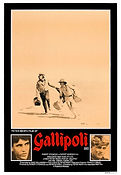
Why We Do It
Australia gave the world its first continuous narrative feature length film. The Story of the Kelly Gang (1906) has now been added to UNESCO’s Memory of the World register of internationally significant documents alongside the Bayeux Tapestry and the Rigveda. Its influence on contemporary cinema was monumental but, more importantly, it's impact on Australian national identity proved significant and controversial – within six years of its release bans on films about bushrangers were imposed in three Australian states.
More than any other art form or media, film has been the site of vigorous contest over the representation of our history and over the constitution of our national identity. Our films help locate us in time and provide a legacy of cultural identification. Access to that legacy is imperative if we expect our national identity to continue to evolve.
Since 1906 Australian film makers have re-engaged with the Kelly Gang narrative no less than nine times, on average about once every two decades. Each director's handling of the subject matter provides as much insight into the social, political and cultural mores of their era as it does on our understanding of the folkloric story itself. The same can be said about any film made in Australia. But how do we gain access to these insights?
Australian films cover a myriad of genres, themes, styles and subject matter. There is extraordinary – and yet unimagined – value to be mined from bringing more than 100 years of cinematic art with us into the 21st Century. Through the process of digitisation the Australian Film Future Foundation seeks to do just that. Come with us and let's make it happen.









A collection of classic posters that have contributed to the landscape of Australian cinema and culture.

